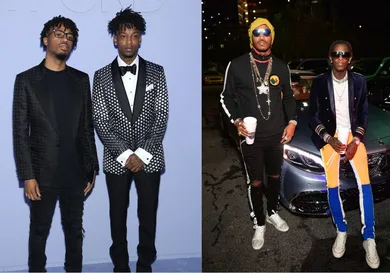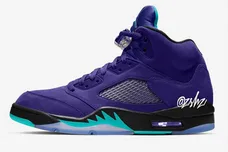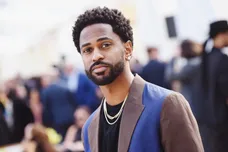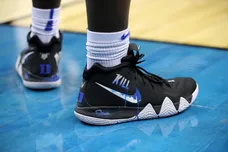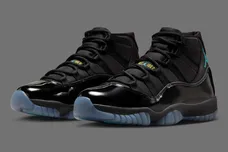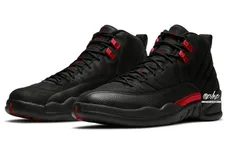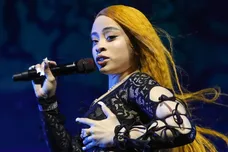Last month, Smokepurpp and Murda Beatz dropped a joint album, Bless Yo Trap. The album’s title draws from a mind-numbing DEADSTAR cut of the same name, a nod to the baby bottle full of lean-tattooed rapper’s token catchphrase. The project was the first major-label rap collaborative album of the year, a continuation of the curious trend that took hip hop by storm in 2017. A laundry list of trendy emcees took turns dropping joint projects, flooding the market with big name guest spots and brash production.
Still, such oversaturation didn’t stop the various participants from putting respectable numbers on the board. The Halloween aesthetic of Metro Boomin, 21 Savage, and Offset’s Without Warning garnered sufficient buzz to debut at the number four spot, selling 53,000 units in its first week. The 10-song collab project spawned the viral hit “Ric Flair Drip,” which cracked the top 50 of the Billboard Hot 100 and eventually received its own music video starring the titular wrestling icon. Future and Young Thug’s Super Slimey, a menacing mesh of auto-tune aficionados, landed at the number two spot and moved 75,000 copies, earning Thug his highest first week sales and Future his third-best selling album of the year. Travis Scott and Quavo, two trap music heavy-hitters, joined forces on Huncho Jack, Jack Huncho, which debuted at number three with 90,000 units. Droptopwop quietly continued the resurgence of Gucci Mane to the tune of 32,000 units; it landed at the number twelve spot in large part due to the strength of gems such as “Met Gala” and “Helpless.” Big Sean caught wind of the Metro trend, linking up with the highly sought after beat maker before the year’s end for Double or Nothing, which opened at number six with 50,000 units. Even Nav got in on the action, delivering Perfect Timing with the help of the aforementioned producer. The collab managed to sell 30,000 units in its first week, and slowly crawled up the chart to reach the number 34 spot in mid-August.
This begs the question: is there a creative explanation for the slew of collab releases that seemingly pop up out of nowhere? While they generate decent traction, they certainly don’t come close to the numbers of the more high profile releases. The fact of the matter is that rap collab albums aren’t much different from their solo counterparts; they’re simply packaged differently. Deceptive as it may be, they’re essentially the same product. The usual suspects deliver the usual themes and theatrics, throw a flashy coat of paint over everything, and then pitch it as “special” or some sort of limited time offer that you need to get in on before it’s too late. Rather than calling a spade a spade, rappers and producers who team up for such ventures tend to throw together a fluffed up release without much forethought or substance and proceed to deposit the check. It’s the definition of a quick sugar fix that leaves the listener wondering why they decided to indulge their sweet tooth in the first place. Take, for example, 21 Savage’s debut studio album, Issa Album. Nine of the fourteen total tracks feature production from frequent collaborator Metro Boomin. Could they have slapped both of their names on the cover and marketed it as the follow-up to their 2016 EP, Savage Mode? Without a doubt. Would it have sounded much different had they chosen to do so? In all likelihood, probably not. It just goes to show how rap’s ubiquitous names can hastily throw something together and call it a hot commodity without anyone batting an eyelash.
Not long ago, hip hop was at the bottom of the food chain. The 90s moguls such as Jay-Z and P. Diddy were anomalies in a landscape dominated by hungry go-getters entranced by the lavish lifestyle of the elite. Getting rich off of rap was a one in a million opportunity with equally poor odds. At the time, it was an unreceptive market where pop music reigned supreme. Yet once rap’s money-making potential finally began to present itself, it ushered in the golden age and an untapped wealth of riches. Rapping had become cool overnight. No longer were the spoils reserved for the savvy businessmen at the top. The money was there for the taking, and many eagerly attempted to capitalize on the newfound financial viability.
Now, hip hop boasts some of the most recognizable stars in the industry. They’ve infiltrated pop culture, inextricably latching on to the public conscious through appearances in commercials, television shows, sports, and all manner of modern day media. Many have even developed into bonafide household names. Metro Boomin’s producer tag was not only one of rap’s favorite punchlines in 2017, but it also represented a stamp of approval from the genre’s go-to hitmaker. His curatorial skill was felt nearly everywhere, and the prolific year long run that ensued was capped by a report that he claimed 10 positions on the Billboard Hot 100 for the week of November 11. Given that he was one of hip hop’s most visible performers, it’s no wonder that his name got plastered on the covers of three separate collab projects.
While there have been plenty of failed collaborative attempts over the years, the coronation of the rap collab album finally came in 2011, when Kanye West and Jay-Z unleashed Watch The Throne. It was an explosive, fireworks-inducing collision of rap’s most prestigious: two untouchable emcees at the height of their careers flexing their upper echelon pedigree. The ostentatious, gold-encrusted cover art screamed blockbuster, and the celebration within was a veritable gold mine: the unveiling of “Otis” as the lead single, the Frank Ocean opener “No Church In The Wild,” and the braggadocious and instantly quotable “N****s In Paris.” Jay and Ye were lethal, playfully trading arrogant and extravagant one-liners. It was an ideal combination that had tangible meaning beyond first week numbers: they were two competitors that elevated their game to bring out the absolute best in one another. The monumental moment eclipsed just about every other release that year, and sold 436,000 copies the first week to become Jay’s 12th consecutive number one, and Kanye’s fifth. Watch The Throne was the dawn of an era, an unforgettable, once-in-a-lifetime record that proved the potential of the rap collab album.
2017 may have seen a serious uptick in joint projects, but the excess inevitably lead to redundancy. Many collab projects wear thin and fall apart completely; they’re ineffective, and simply don’t have the lasting appeal of well-crafted releases such as Blackout!, Madvillainy, Black Star, or Piñata. With quantity continuing to outweigh quality, the process of stitching together a hollow, half-baked release feels gimmicky and rushed. To make matters worse, the process has been made even easier through file-sharing technology brought about by the internet. Conflicting schedules are no longer an issue, seeing as collaborators don’t even have to be in the same studio. Artists combining their creative talents used to be a significant moment for the culture, with fans spending time debating their dream hip hop collaborations. Gone are the days of Eric. B & Rakim’s Paid in Full and Gang Starr’s Moment of Truth, when DJ-rapper pairings were a cornerstone of hip hop. Now, collab projects are nothing more than a lucrative marketing tool that labels drop without much promotion. The initial excitement quickly wears off, as artists scramble to attract attention and keep their name in headlines for as long as possible in order to cash in on their rising stock. And guess what: consumers are hooked. It’s a business model that works, a function of the current state of the music industry and further proof of hip hop’s growing commercial power.
